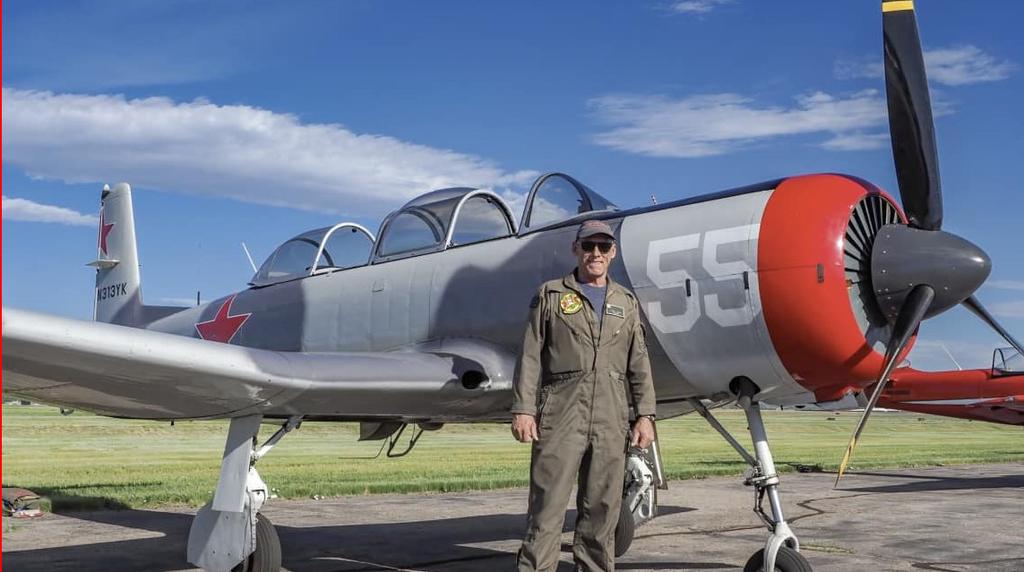The National Transportation Safety Board (NTSB) announced on Monday that the investigation into the cause of a tragic mid-air collision near Lancaster, California, could take more than a year to complete. The fatal accident occurred on Sunday, involving two aircraft—a Yakovlev Yak 52 and a Nanchang CJ-6A—on what was supposed to be a routine joint cross-country flight. The crash resulted in the death of one pilot, identified as 62-year-old Ryder Adams, while the other pilot survived without injuries.

At around 1 p.m. on Sunday, the two planes collided mid-air. The Yakovlev Yak 52 managed to crash-land near the intersection of 47th Street and Avenue F in Lancaster, while the Nanchang CJ-6A came down approximately at Avenue G and 60th Street, roughly a mile apart. Tragically, the pilot of the Nanchang CJ-6A, Ryder Adams, was pronounced dead at the scene. The other pilot, flying the Yakovlev Yak 52, miraculously survived the ordeal and was able to walk away from the wreckage without injuries.
Eyewitnesses from the Lancaster community expressed their shock and sadness following the incident. “Anytime anyone loses their life, it’s sad, you know. They were out there for a Sunday flight, and that happened,” remarked Bruce Hamburg, a Lancaster resident who spoke to local media. The incident has shaken the otherwise peaceful suburban community, with many struggling to comprehend how a routine flight could end so tragically.
The NTSB has confirmed that it will conduct a thorough investigation, which could last anywhere from one to two years. The cause of the collision is still unclear, but investigators have already recovered a flight data recorder from the wreckage of the Nanchang CJ-6A. This critical piece of evidence will be sent to NTSB headquarters in Washington, D.C., for further examination. A flight data recorder, often referred to as a “black box,” stores detailed information about an aircraft’s operation, including flight altitude, speed, and pilot inputs. It will provide valuable insights that could help determine what went wrong during the flight.
In addition to the data from the flight recorder, NTSB officials will also carefully scrutinize the physical wreckage of both aircraft. The Yakovlev Yak 52 will undergo a detailed examination before both planes are transferred to an offsite facility for further analysis. Investigators will review various factors, including the condition of both planes, the pilots’ backgrounds and training, the maintenance records of the aircraft, and the environmental conditions at the time of the crash.
The Yakovlev Yak 52 and Nanchang CJ-6A are both military trainer aircraft, often used for recreational flying. The Yakovlev Yak 52, originally designed in the Soviet Union in the 1970s, is known for its aerobatic capabilities and is a popular choice among flight enthusiasts. The Nanchang CJ-6A, a Chinese-made aircraft, shares a similar history as a military trainer used primarily by the Chinese Air Force. Both aircraft are highly regarded within the aviation community for their durability and performance, although neither is particularly common in commercial or civilian aviation circles.
The investigation will involve not just an examination of the aircraft but also the circumstances leading up to the flight, including air traffic control communications, weather conditions, and whether either pilot had any prior incidents or health concerns. The NTSB’s investigative process is notoriously thorough, ensuring that all potential factors—no matter how small—are examined before any conclusions are drawn.
For families, friends, and fellow pilots who knew Ryder Adams, the coming months will be a painful waiting period as they seek answers about what led to this devastating accident. The final report from the NTSB, once released, will offer the most detailed analysis of the events leading up to the collision, providing both a factual account and potential recommendations to prevent similar incidents in the future.
Mid-air collisions are relatively rare in modern aviation, particularly in well-regulated airspaces like that of the United States. According to the Federal Aviation Administration (FAA), most mid-air collisions in the U.S. involve smaller general aviation aircraft, often in less congested areas or during recreational flights. While accidents involving commercial jets garner the most attention, private planes and military trainers like the Yakovlev and Nanchang are involved in the majority of these incidents.
In a report by the Aircraft Owners and Pilots Association (AOPA), it was noted that pilot error is the leading cause of mid-air collisions, particularly during maneuvering and formation flights, which may be relevant in this case given that both planes were on a joint cross-country trip. The NTSB’s findings will be crucial in understanding whether human error, mechanical failure, or a combination of factors led to this unfortunate incident.
As the investigation progresses, the Lancaster community and the broader aviation world will await answers about what caused this mid-air collision. While the survivor’s account and technical data may shed light on the events, it will take time for the NTSB to piece together a full understanding of what went wrong. For now, the tragic death of Ryder Adams serves as a stark reminder of the risks involved in aviation, even for experienced pilots on routine flights.
